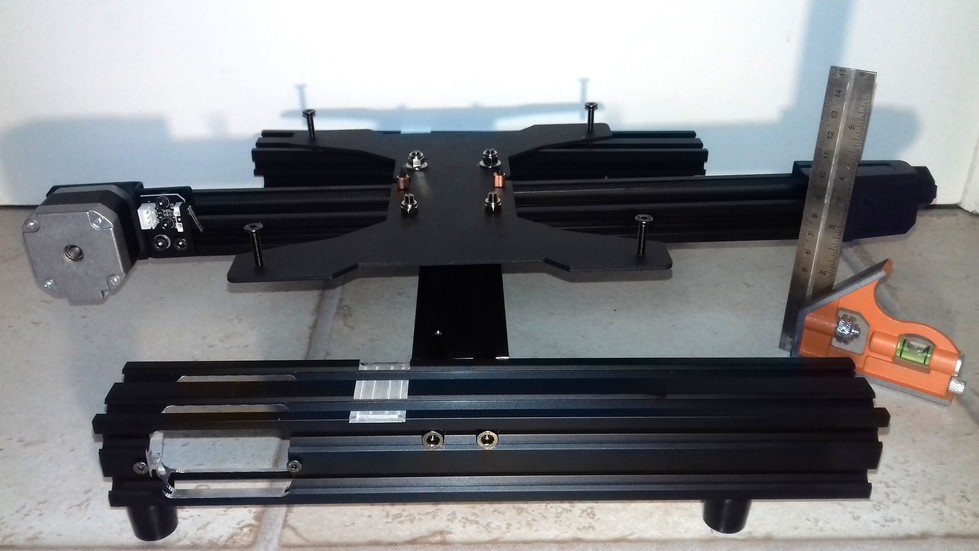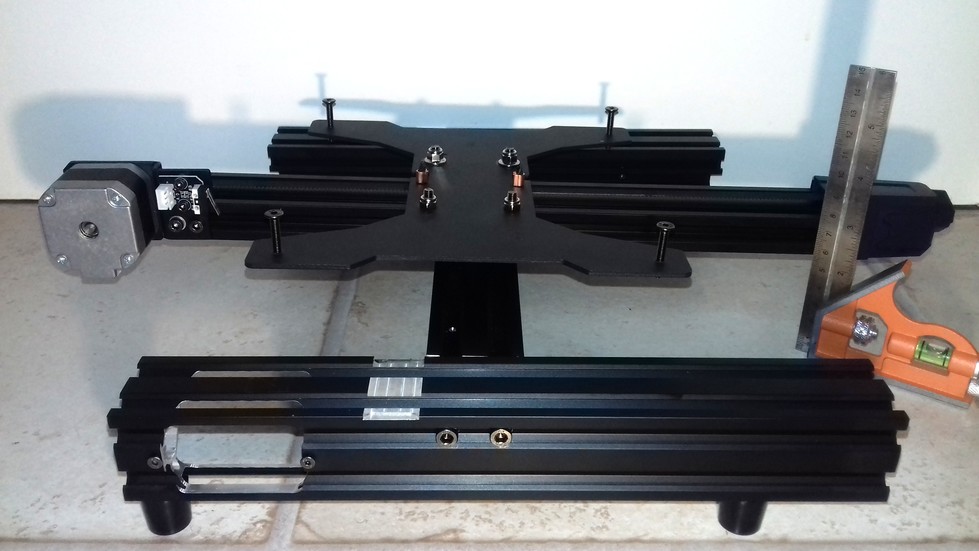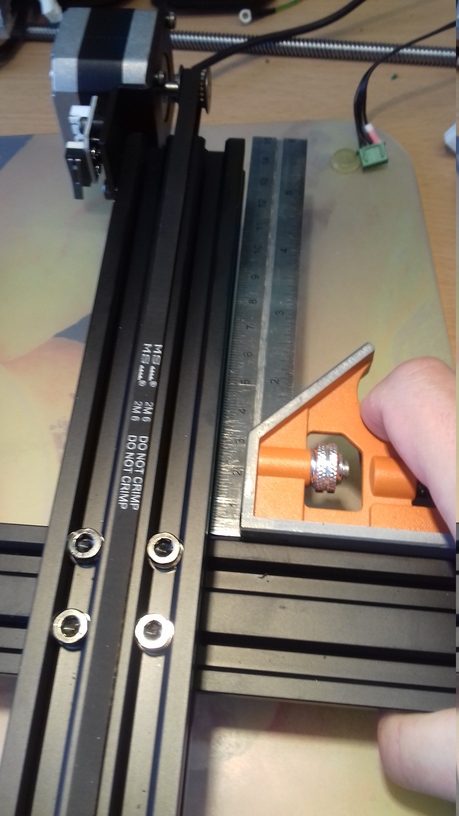Frame¶
As already mentioned in the introduction of this hardware section, I strongly recommend to check and tram the whole construction of the printer's frame first.
Check the whole frame if everything is square, rectangular and perpendicular, check all screws, bolts, belts, wheels, electrical connectors - literally everything. This will save you a lot of hassle, frustration and headaches later..
Just to show you what I'm talking about why it's really important to do so, look at the following pictures of the Y axis frame.
There you can see the huge amount of play you have and you can actually mount the frame completely crooked.
The first two pictures I took for showing you the maximum deviations which are possible.


The following picture shows you the y-axis how it came preassembled at one of my Neos from the manufacturer - now imagine me trying to get an almost perfect print out it if I wouldn't have checked on it..

Seriously, I can't encourage you enough to do a complete check-up and maintenance of your printer before you even try to print the first time.
Not only will you get to know your printer better, it'll most likely save you headaches and many hours of fiddling around trying to find the perfect print settings - just to despair of weird artifacts showing up on prints just when you thought you found the perfect settings because they were caused by a sticky and partially clogged lead screw thread or so.
Get yourself a good carpenters square in a 90° rectangular angle. Make sure the tool itself actually really is square - especially the cheap ones being offered often lack of precision and aren't really square themself.
When attempting to measure the parts of the frame and bring them into the correct position, always measure at both sides of the construction. By doing so you can mostly avoid any misalignments which might occur if only checking at one side and maybe not really paying attention to the parts of the rails which are further away.
You can also strengthen the construction itself by adding certain coponents which make sure the construction is and stays in a rectangular position.
It's also advisable to use some screw glue like Loctite, just to make sure screws won't come loose over time due to the vibrations of the machine.
Take your time setting up the frame of the printer (and the axes and wheels etc. after doing so as well), be as precise as you can be. Every misalignment here will most likely cause some weird issues later which might be hard to find or even solve if you're not remembering that maybe the construction itself might be the cause.
